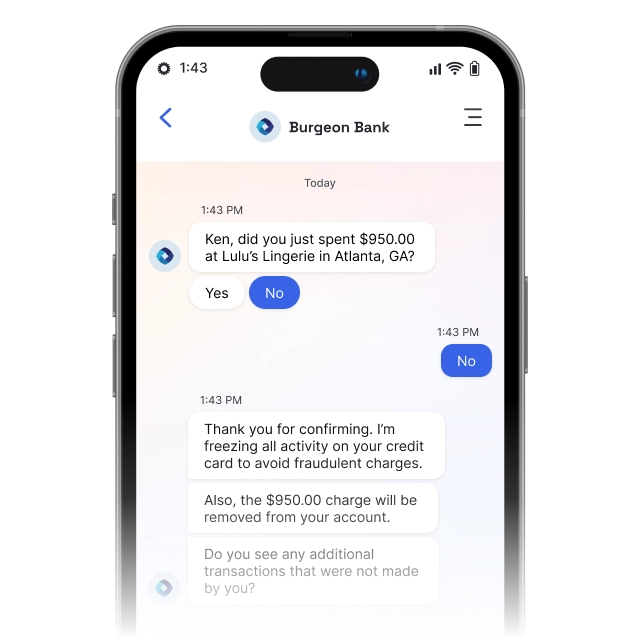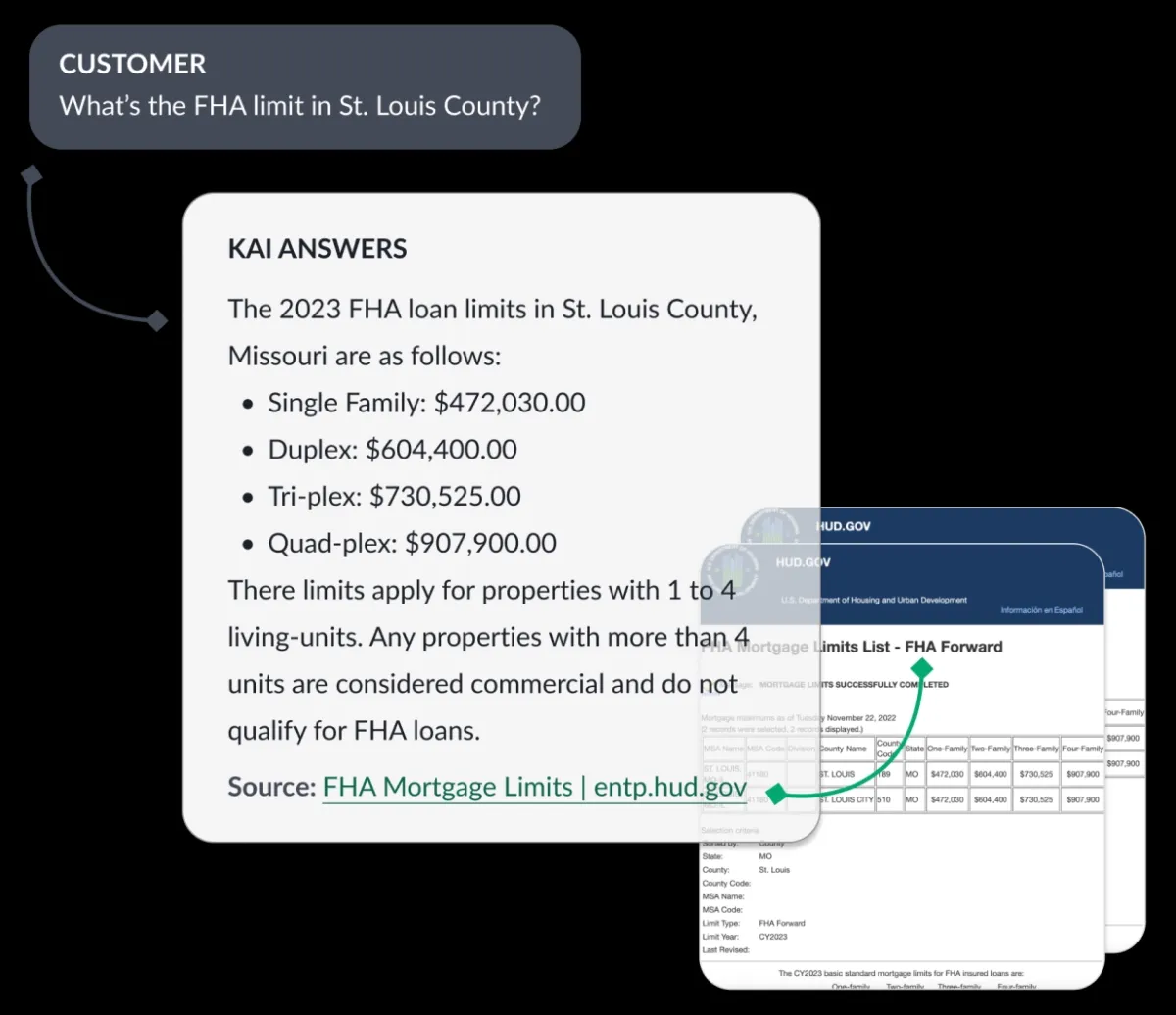Industries where customer service is a top priority face increasing costs due to the demand for excellent customer service. Banking chatbots allow customers to complete transactions using either voice or text, reducing operational costs while enhancing customer satisfaction.
We have compiled the top 7 chatbots with financial literacy, including their features, comparisons, and best practices for deployment to address cost and service concerns.
Top 7 chatbots in banking
*Sorting is based on the average rating.
1. Tidio Lyro
Tidio can handle routine banking inquiries, provides basic financial information, and supports small to medium-sized banking institutions and credit unions with their customer service needs.
Key features:
- Banking-specific conversation templates for common inquiries like account balances, transaction history, and basic loan details.
- Creating your own AI agents and implementing them with Lyro.
- Compatible with popular banking tools and CRM systems used by smaller financial institutions.
- Essential compliance features include data encryption and secure handling of customer information.
- Mobile-responsive design tailored for banking customers on smartphones and tablets.
Figure 1. Tidio’s banking chatbot.1
2. Boost.ai
Boost.ai is a conversational AI platform for financial services, especially with a strong presence in European banking. It handles regulatory inquiries, performs complex financial calculations, and manages sensitive customer data in compliance with banking standards.
Key features:
- Self-service API tools enable banks to tailor conversations independently of developers.
- Supports over 30 languages with banking-specific translations.
- Includes conversation analytics featuring banking KPIs and customer journey mapping.
- Offers proactive engagement for notifications, payment reminders, and financial opportunities.
3. Intercom
Intercom is a customer engagement platform designed for banking applications, targeting digital-first financial institutions. It emphasizes banking customer engagement, enhances digital banking experiences, and assists with financial product adoption and customer retention.
Key features:
- Conversational marketing tools are designed to promote financial products and attract customers.
- Automates customer engagement through lifecycle messaging for banking relationships and important financial milestones.
- Segment customers based on banking behaviors and how they use financial products.
- Support onboarding banking clients with automated welcome messages and guidance for setting up accounts.
4. IBM watsonx Assistant
IBM watsonx Assistant is an enterprise AI platform widely used in banking and financial services. It manages large-scale banking operations, interfaces with complex banking systems, and facilitates regulatory reporting.
Key features:
- Visual conversation builder designed for financial service workflows.
- Ensures security and governance compliance with banking regulations and audit standards
- Integrates with IBM’s financial services ecosystem.
- Features a scalable architecture that supports millions of banking customers.
- Includes advanced analytics with banking-specific metrics, customer insights, and operational reporting.
Figure 2. IBM’s visual chatbot builder demo page.2
5. Yellow.ai’s BFSI Platform
Yellow.ai’s BFSI platform is a comprehensive AI solution designed for Banking, Financial Services, and Insurance industries. It understands the complexities of financial products, manages compliance-sensitive interactions, and automates workflows specific to banking.
Key features:
- DynamicNLP technology is uniquely trained on BFSI conversation patterns and financial terminology.
- It offers pre-designed banking templates for common use cases, such as account opening, loan applications, and payment processing.
- 100 languages with banking-specific localization and regional compliance features.
- Provides campaign management tools to promote financial products and identify cross-selling opportunities.

Figure 3. Yellow.ai’s AI and human agent blended service.3
6. LivePerson Conversational Cloud
LivePerson Conversational Cloud is an enterprise-grade conversational AI designed for banking, with various implementations and partnerships. It detects urgency levels, escalates sensitive financial matters properly, and preserves context across different banking channels.
Key features:
- Omnichannel platform supporting web, mobile banking apps, voice banking, and messaging platforms.
- It features voice-to-digital transition capabilities, enabling handoffs from phone banking to chat.
- Banking-specific datasets and conversation patterns drive insights from generative AI.
- Real-time agent support provides contextual customer information and recommended responses.

Figure 4. LivePerson’s banking chatbot’s Fraud prevention.4
7. Kasisto KAI
Kasisto KAI is specifically designed for financial services, leveraging extensive banking domain knowledge. It is trained on banking terminology, regulatory standards, and financial procedures. KAI is capable of managing complex, multi-step banking activities, like loan applications, with contextual understanding.
Key features:
- Multi-agent AI architecture with specialized agents for various banking functions, such as account management, loans, and investments.
- A behavioral personalization engine that examines real banking behaviors to deliver customized financial insights
- Advanced fraud detection integrated with real-time transaction monitoring and alerts for suspicious activities
- Proactive financial coaching that includes spending analysis, budget recommendations, and savings goal tracking.

Figure 5. Kasisto KAI’s Agent Assist.5
Top 4 use cases of banking chatbots
1. Lead generation and qualification
Chatbots can engage with visitors on the bank’s digital platforms to generate leads and assess those leads with relevant questions.
Example: After a customer completes a transaction on a bank’s mobile app, the chatbot initiates a brief conversation asking for feedback. Instead of filling out a long survey, the customer answers a few questions conversationally, making the feedback process more engaging and less time-consuming.
2. Customer service
24/7 availability and the tireless and consistent nature of chatbots for customer support are important advantages for chatbots in banking.
3. Feedback collection
Long feedback forms and surveys can be a nuisance to complete. A chatbot can engage customers with its natural language understanding and generation.
Example: After a customer completes a transaction on a bank’s mobile app, the chatbot initiates a brief conversation asking for feedback. Instead of filling out a long survey, the customer answers a few questions conversationally, making the feedback process more engaging and less time-consuming.
4. Personalized marketing strategies
Customers’ conversations with chatbots can be analyzed to personalize the bank’s messages for the customer.
Example: A customer frequently interacts with a bank’s chatbot to ask about mortgage rates. The bank analyzes these conversations and sends personalized emails with information on mortgage products, rates, and offers that match the customer’s interests.
How to implement a banking chatbot?
1. Assessment & planning
Specify the needs for your banking chatbot: Start by identifying the particular requirements of your organization and establishing definite objectives for success. Consider these critical deciding factors:
- Priority use cases: Select which financial services, such as account queries, loan applications, fraud alerts, payment processing, or customer onboarding, will provide the highest return on investment. Focus on the frequent, high-volume interactions that currently burden your human agents.
- Integration prerequisites: Create a map of your current financial infrastructure, including payment processors, CRM platforms, mobile banking apps, and core banking systems like Temenos, FIS, and Jack Henry. Ensure the platform you’ve chosen can easily connect with these essential systems.
- Standards for security and compliance: Determine the necessary conditions, such as GDPR compliance, SOC 2 certification, PCI DSS Level 1, and local banking laws. Think about audit trail capabilities and data residency requirements.
- Performance Expectations: Set realistic standards for system uptime, customer satisfaction ratings, response times, and conversation completion rates. Consider your peak usage times and customer volume.
- Timeline and Budget: Calculate the total cost of ownership, including platform licenses, integration fees, training, and ongoing maintenance. Account for compliance requirements that could extend the implementation timeline.
2. Platform selection
Evaluate platforms based on your specific banking needs. You can request detailed demos tailored to your main use cases from most vendors. Some aspects you might ask vendors to demonstrate include:
- Capabilities: The platform’s ability to handle complex banking procedures, regulatory compliance, and financial terminology. Test using real client scenarios from your organization.
- Complexity of integration: Request technical details for connecting with your core banking systems. Review the API documentation and ask about support and the implementation timeline.
- Vendor stability: Evaluate the financial health of vendors, their experience in the banking industry, and their long-term sustainability. Check references and case studies from existing banking clients.
- Total cost analysis: Compare expenses related to licensing, implementation, training, integration, and ongoing support. Calculate metrics such as cost per conversation and projected ROI.
3. Technical integration & system setup
Work with your IT team and vendor specialists to integrate the chatbot.
- Core integration: Connect the core banking system by creating API links for balance inquiries, transaction histories, and account access. Set up proper authorization and authentication procedures.
- Payment system connection: Enable real-time transaction capabilities to process transactions, pay bills, and send money, and integrate with payment processors.
- CRM and customer data integration: Link customer relationship management platforms to provide support based on client preferences and account history.
- Testing and quality assurance: Test every client scenario and banking workflow, including validation of integration and load testing.
4. Training, launch & monitoring
After completing the technical integration, deploying a chatbot is similar to deploying any other chatbot.
You should train your chatbot with relevant data and design conversation flows that match your institution’s service standards through conversation design, knowledge base development, and your brand’s preferred voice and tone. Check out how to build a chatbot.
Then, prepare your team for the changes the chatbot will bring and train your agents to maximize efficiency. Afterward, you can launch your chatbot and monitor its performance. One of the most important practices is to test continuously and closely monitor the chatbot to optimize its performance.
Best practices for banking chatbots
1. Security-first implementation
Banking chatbots manage sensitive financial data that demands the highest security standards. Here are some measures you can implement with your chatbot to ensure top security for customers.
- Multi-layer authentication: For critical transactions and account access, use multi-factor authentication in conjunction with strong customer verification. When feasible, use biometric verification, and keep session security intact during all communications.
- End-to-end encryption: Verify that all correspondence with customers is encrypted while it’s in transit and at rest. To handle new threats, use banking-grade encryption standards and update security procedures frequently.
- Fraud detection integration: To spot questionable activity, odd transaction patterns, and possible security breaches, integrate chatbots with live fraud detection systems. When risks are identified, activate automatic account protection procedures.
- Audit trail maintenance: For security and regulatory compliance, keep thorough records of every chatbot interaction. Make sure audit trails adhere to banking regulations and, if necessary, assist with forensic analysis.
- Frequent security assessments: Perform regular vulnerability assessments, penetration tests, and security audits. Stay informed about the latest developments in cybersecurity threats and adjust your defenses accordingly.
2. Meet banking standards and regulations
- Consumer protection compliance: Verify that chatbots adhere to fair lending principles, receive appropriate consent for data gathering, and make the necessary disclosures. As mandated by banking rules, implement accessibility features to support clients with disabilities.
- Data privacy adherence: When processing consumer data, adhere to the CCPA, GDPR, and other relevant privacy laws. As mandated by banking authorities, give explicit privacy disclosures, comply with requests to delete data, and keep track of data processing records.
- Cross-border compliance: Make sure chatbots used by foreign banks abide by laws in every country in which they do business. Consider the criteria for data residency and the disparities in privacy regulations among nations.
3. Optimize customer interactions
- Personalized financial guidance: Utilize past transactions and banking patterns to provide relevant financial analysis, product recommendations, and proactive support. Provide value-added services while honoring the privacy and interests of your clients.
- Channel integration: Ensure that all banking channels, including websites, mobile apps, phone banking, and in-branch services, deliver consistent user experiences. When clients switch between channels, maintain the context of their interaction intact.
- Proactive customer service: Use chatbots to promptly notify customers about account activity, upcoming payments, unusual transactions, and financial updates. To prevent overburdening customers, strike a balance between proactive communication and client preferences.
4. Maximize operational performance
Put operational protocols in place to guarantee reliable, superior chatbot performance by using:
- Performance monitoring: Track key indicators, including system uptime, customer satisfaction ratings, response accuracy, and conversation completion rates. Establish goals and continually improve performance in line with industry standards for the banking sector.
- Knowledge management: Maintain current and accurate records of banking policies, procedures, services, and products to ensure ongoing compliance and effective service delivery. To ensure accuracy and compliance, implement version control and approval processes for updates to the knowledge base.
- Staff collaboration: Promote effective cooperation between human banking experts and chatbot technology. Train employees on how to use automated systems efficiently and leverage chatbot insights to improve overall customer service.
5. Use strategic innovations
Use chatbots strategically to improve your institution’s competitive edge by:
- Financial innovation: Utilize chatbots to introduce new banking services, improve existing ones, and respond quickly to market opportunities. Identify unmet needs and service gaps by analyzing data from client interactions.
- Cost optimization: Systematically identify ways to automate repetitive banking tasks while reallocating human resources to high-value roles that require specialized knowledge and interpersonal skills.
- Future readiness: Stay current with advancements in banking and technology that can enhance chatbot performance. Plan to incorporate new technologies such as blockchain-based services, AI-driven financial advice, and voice banking.
FAQ
Further reading
Find the Right VendorsReference Links

Cem's work has been cited by leading global publications including Business Insider, Forbes, Washington Post, global firms like Deloitte, HPE and NGOs like World Economic Forum and supranational organizations like European Commission. You can see more reputable companies and resources that referenced AIMultiple.
Throughout his career, Cem served as a tech consultant, tech buyer and tech entrepreneur. He advised enterprises on their technology decisions at McKinsey & Company and Altman Solon for more than a decade. He also published a McKinsey report on digitalization.
He led technology strategy and procurement of a telco while reporting to the CEO. He has also led commercial growth of deep tech company Hypatos that reached a 7 digit annual recurring revenue and a 9 digit valuation from 0 within 2 years. Cem's work in Hypatos was covered by leading technology publications like TechCrunch and Business Insider.
Cem regularly speaks at international technology conferences. He graduated from Bogazici University as a computer engineer and holds an MBA from Columbia Business School.


Be the first to comment
Your email address will not be published. All fields are required.